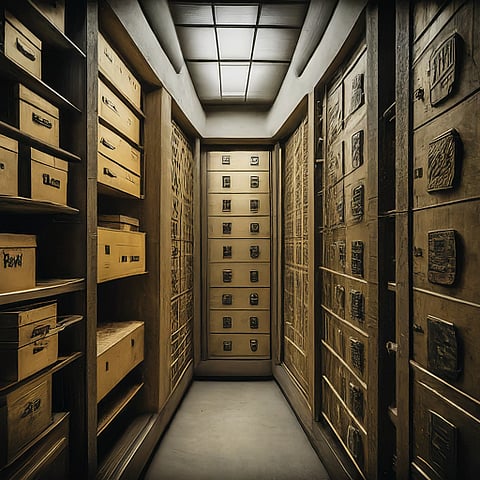

Most of us rely on bank lockers to store many of our valuables and valuables. Everyone does so because of the common belief that lockers are safe. The bank’s currency chest, the gold jewellery pledged by the customers, the registration documents of the property given as collateral for a loan and important files are all stored in the strongrooms.
Valuable items and documents are stored inside the strongrooms in fireproof cupboards. It is here that safe deposit lockers, made of heavy metal, are placed. A safe deposit locker provides the same security and attention that is given to gold jewellery that is entrusted with the bank. So, you can trust that bank lockers are safe.
But despite all the security, how come ₹18 lakh kept in a bank locker by a customer got damaged by white ants? Who is liable for this?
Doesn’t the bank have any responsibility?
It is not that the bank has no responsibility on what happens to the bank locker and the items kept in it. The bank is indeed responsible for the safety of lockers and their contents and is obligated to extend the same level of care and security to them as it does to its own property.
Cases where the bank is responsible.
If losses occur from events like fire, robbery, building collapse, or fraud by bank staff, the bank must compensate the customer with an amount equal to one hundred times the locker’s yearly rental fee.
Cases where the bank is not responsible.
If the loss is due to natural disasters such as earthquakes, floods, thunder, lightning, or storms, the bank is not liable for the same.
Who is responsible?
Responsibility for loss or damage to items in a bank locker falls on whom—the bank or the locker-renting customer? The contract between the bank and customer resembles a house rental agreement, where the landlord is unaware of and not liable for contents or damages within the property. Similarly, the bank is not accountable for locker contents as it remains uninformed about them.
Here is how it works.
Bank lockers operate with two keys: one held by the customer and the other by the bank, preventing the bank from accessing the locker without the customer’s consent. The bank is not typically liable for lost items and does not offer special insurance for locker contents. However, customers storing valuable jewellery or other items may opt for separate insurance, which can be included in home insurance policies.
What happens if white ants damage the money in the locker
A recent news story reported that white ants damaged a substantial sum of money in a bank locker. Before determining the bank’s liability, it is important to consider the legality of storing currency in lockers. The rule is that lockers should not contain illegal or hazardous items. While valuable jewellery is permissible, money, weapons, dangerous goods, and drugs are not. Thus, this raises a legal question. The customer may have breached terms by storing currency and might claim the bank failed to protect the locker adequately. A conclusive answer on liability is not yet in sight.
The author is a banking and finance expert.